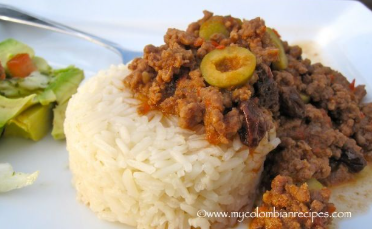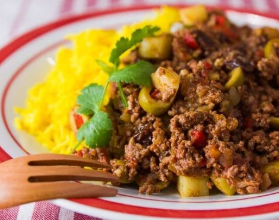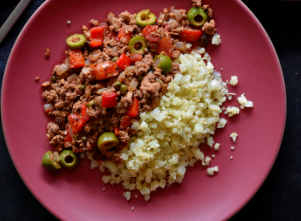Ingredients for the Picadillo

To create the best Cuban Picadillo, carefully select high-quality ingredients that will enhance the flavors of this traditional dish.
Depending on regional variations, ingredients like ground beef, tomatoes, onions, garlic, and olives are commonly used.
These ingredients not only add depth of flavor but also offer nutritional benefits, making this dish a wholesome and delicious choice for those seeking a taste of authentic Cuban cuisine.
Step-by-Step Cooking Instructions
Let’s now bring the vibrant flavors of Cuban cuisine to life by exploring the step-by-step cooking instructions for the best Cuban Picadillo recipe.
From browning the ground beef to simmering it in a savory tomato sauce, each detail in the cooking process plays a crucial role in creating the perfect balance of sweet and savory flavors in this traditional dish.
Get ready to embark on a culinary journey filled with rich aromas and mouthwatering tastes as we uncover the secrets to making an authentic Cuban Picadillo.
Ingredients for Picadillo
When preparing the traditional Cuban dish of Picadillo, it is essential to gather high-quality ingredients that will infuse rich flavors into the savory mixture.
Opt for ground beef, onions, garlic, bell peppers, tomatoes, olives, capers, and warm spices like cumin and cinnamon.
For those seeking a twist, consider ingredient substitutions like using ground turkey or adding raisins for a touch of sweetness. These choices enhance the dish’s depth and complexity.
Read more : Ingredients Needed
Cooking Process Details
Embark on the culinary journey of preparing the Best Cuban Picadillo by following these step-by-step cooking instructions to bring out the vibrant flavors and textures of this classic dish.
Utilize traditional cooking techniques like sautéing ground beef with onions, garlic, and bell peppers, then enhancing the flavor profiles with a dash of cumin, oregano, and olives.
Let the savory aroma fill your kitchen as you create this delicious meal.
Browning the Ground Beef
Begin the browning process by heating a skillet over medium-high heat.
Use browning techniques like allowing the ground beef to sear without overcrowding the pan, promoting even color development.
Stir occasionally to ensure all sides are browned evenly.
The transformation of the meat from pink to a rich golden-brown hue adds depth and flavor to the Cuban Picadillo, enhancing its overall deliciousness.
Adding Aromatic Spices
When it comes to elevating the flavors of your Cuban picadillo, the key lies in the art of selecting aromatic spices.
These additions not only enhance the taste but also bring depth and complexity to the dish.
Mastering the balance of these aromas is crucial for creating a truly authentic and delicious picadillo experience.
Spice Selection Tips
Selecting the perfect aromatic spices can elevate the flavors of your Cuban picadillo to a whole new level of culinary excellence.
Experiment with spice origins like cumin from the Mediterranean or cloves from Indonesia to create a unique blend.
Spice combinations such as cinnamon and cumin or oregano and bay leaves can add depth and complexity to your dish.
Let your creativity and taste buds guide you towards a truly exceptional picadillo experience.
Flavor Enhancement Techniques
Enhancing the flavor profile of your Cuban picadillo can be easily achieved through the strategic addition of aromatic spices.
Utilize umami boosters like cumin, oregano, and bay leaves to intensify the savory notes.
Layering these spices throughout the cooking process will create a rich and complex taste experience.
Experiment with different combinations to find the perfect balance that will elevate your picadillo to a whole new level of deliciousness.
Balancing Aromas Effectively
To achieve a harmonious blend of aromas in your Cuban picadillo, carefully integrate a selection of aromatic spices that complement each other to enhance the overall flavor profile.
Experiment with aromatic combinations like cumin, oregano, and bay leaves to add depth and richness to the dish.
Balancing these spices effectively will elevate the flavors, creating a truly authentic and mouthwatering Cuban picadillo that tantalizes the taste buds.
Incorporating Olives and Raisins
When incorporating olives and raisins into your Cuban picadillo recipe, a harmonious balance of savory and sweet flavors can be achieved.
Experiment with different olive varieties such as Spanish Manzanilla or Kalamata for unique tastes.
Raisins add a touch of sweetness; try using golden raisins for a milder flavor or dark raisins for a richer taste.
These ingredients elevate the complexity of your dish, offering a delightful fusion of flavors.
Simmering With Tomatoes
As the picadillo simmers gently with ripe tomatoes, its flavors intensify, creating a rich and robust base for this classic Cuban dish.
The cooking techniques involved in this step are crucial, as the tomatoes need to break down slowly to release their sweetness and acidity.
Using a variety of tomatoes, such as Roma or vine-ripened, can enhance the depth of flavor in the picadillo, elevating it to new heights.
Adjusting Seasoning to Taste
When it comes to creating the perfect Cuban picadillo, adjusting the seasoning to taste is a crucial step.
The beauty of this dish lies in its ability to be customized to suit individual preferences.
Experimenting with the balance of sweet and savory flavors can elevate the dish to new heights of culinary delight.
Flavor Customization Tips
Enhance the depth of flavor in your Cuban picadillo by adjusting the seasonings to suit your personal taste preferences.
Experiment with different spice combinations like adding a dash of cumin for warmth or a pinch of smoked paprika for a smoky twist.
Consider ingredient substitutions such as using ground turkey instead of beef for a lighter option.
Embrace the freedom to tailor your picadillo to create a dish that truly delights your palate.
Balancing Sweet and Savory
Achieving the perfect balance between sweet and savory flavors in your Cuban picadillo requires a nuanced approach to adjusting the seasoning to taste.
Embrace the contrast of savory taste profiles with sweet flavor profiles, allowing each ingredient to shine while harmonizing as a whole.
Experiment with spices, herbs, and hints of sweetness to create a dish that tantalizes the palate with its intricate blend of flavors.
Serving Suggestions and Pairings
Elevate your dining experience with thoughtful serving suggestions and perfect pairings that complement the rich flavors of this Best Cuban Picadillo recipe. Pair this savory dish with classic white rice to soak up the delicious sauce, fried plantains for a sweet contrast, and a crisp green salad for a refreshing touch. For beverage pairings, consider serving with a cold glass of sangria or a traditional Cuban mojito.
| Side Dishes | Beverage Pairings |
|---|---|
| White Rice | Sangria |
| Fried Plantains | Cuban Mojito |
| Green Salad |
Storing and Reheating Tips
For optimal flavor retention and convenience, proper storage and reheating techniques are key when handling leftover portions of this flavorful Cuban Picadillo.
Store any leftovers in airtight storage containers to maintain freshness.
When reheating, consider using gentle methods like stovetop reheating to prevent drying out the dish.
This ensures that every bite of your beloved Cuban Picadillo remains as delicious as the first time you enjoyed it.
Tips for Making Ahead and Freezing
When planning to save time and savor the flavors of your Best Cuban Picadillo recipe later on, consider the following tips for making ahead and freezing.
To streamline meal prep, double the recipe and freeze half for future enjoyment.
Store the Picadillo in airtight containers or freezer bags, labeling them with dates for easy tracking.
Thaw in the refrigerator overnight before reheating for a quick and convenient meal.
Conclusion
In conclusion, this Best Cuban Picadillo Recipe offers a flavorful and comforting dish that is sure to delight your taste buds.
With the perfect balance of savory and sweet flavors, this versatile dish can be enjoyed on its own or paired with traditional sides for a complete meal.
By following the simple steps outlined in this recipe, you can easily create a delicious and satisfying homemade meal that will impress your family and friends.



